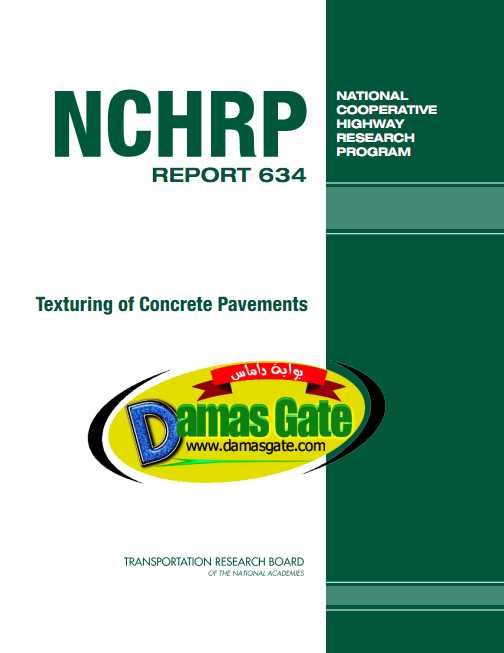Texturing of Concrete Pavements

SUMMARY
The objective of the research performed under NCHRP Project 10-67 was to recommend
appropriate methods for texturing concrete pavements for specific applications and ranges
of climatic, site, and traffic conditions. To accomplish this objective, several sequential tasks
were performed.
First, information was collected, reviewed, and analyzed to establish the state of the practice
in concrete pavement texturing and to identify innovative technologies. Next, a field investigation
of pavement surfaces was conducted to identify concrete surface textures appropriate
for
construction and evaluation in a test site. The test site featured nine sections with “formed”
textures
(i.e., drag or tine finishes created in fresh concrete) and three sections with “cut” textures
(i.e., ground or grooved finishes created in hardened concrete) that were tested
for texture, friction, and noise shortly after construction.
Analysis of data obtained from both the in-place and newly constructed texture test sections
was combined with information on the state of the practice to develop a process and guidelines
for selecting textures for a range of applications and to prepare sample specifications for
texturing
concrete pavements.
Background
It has long been recognized that the texture of portland
cement concrete (PCC) pavement surfaces directly influences
friction and safety characteristics (American Concrete Institute
[ACI], 1988). Prior to 1967, most PCC surface textures
were constructed using a burlap drag process. However, at
that time, this texturing method did not provide a minimum
frictional coefficient of 0.30, as was required by at least one
state—California (Neal, 1985). Consequently, other texturing
methods were developed to improve frictional/safety characteristics,
the most common of which is transverse tining (grooving
the PCC surface perpendicular to the traffic direction prior
to curing). The uniform narrow grooves provide water drainage
and increase the macro-texture of the surface, resulting
in good wet-weather pavement–tire friction and reportedly
a good safety record.
Download
*